It’s fall planting time in Southern California, and I’m planting phlomis. And it’s deja vu all over again. I like to think that the blog functions at least as a personal resource, a planting reference that at a minimum chronicles successes and failures. (e.g. How many times have I tried to grow asphodels? Four times now?) But it seems my enthusiasm for the constant churn of new plants outpaces any thorough documentation of their ultimate fate in the garden. And as we all know, those who do not learn from history are doomed to repeat it. Is the definition of garden insanity growing the same plant over and over, expecting a different result? Not necessarily. Different light and soil conditions, air flow and air circulation, or lack thereof, all vary wildly even in a small garden. And then there’s the variables of excessive heat or drought, fall vs. spring planting. So trialing the same plant over and over isn’t as crazy as it sounds. For now I’ll admit to being a tad forgetful, but not crazy.
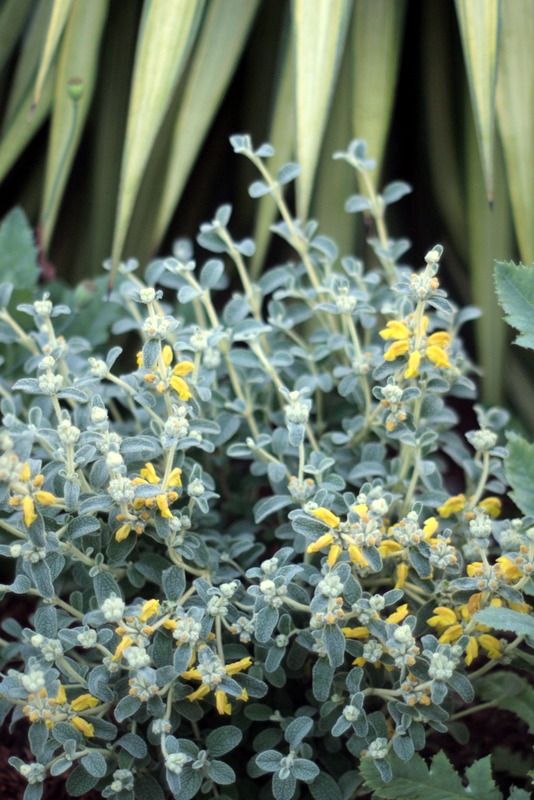
Take phlomis. I love everything about phlomis for the dry garden, the tidy, corrugated leaves and the nubby, pagoda-like architecture of its blooms. I’ve grown many kinds of these mint family members distributed from China through Eurasia to the Mediterranean: P. italica, P. tuberosa, P. russeliana, P. purpurea and, as of this month, Phlomis lanata again, pictured above, which is one of the smaller kinds. Many have become too large or failed to thrive (such as italica and tuberosa). But haven’t I tried P. lanata before? And, if so, when? And, more importantly, what happened to it?
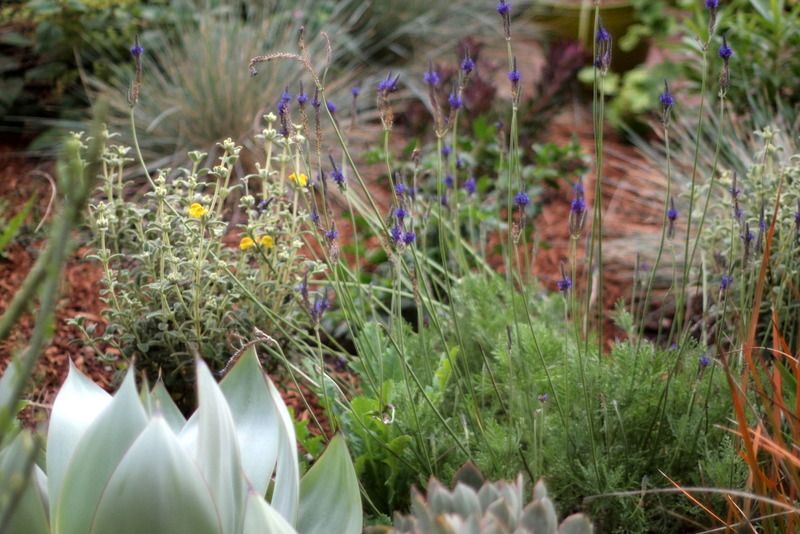
Phlomis lanata with the fern leaf lavender, Lavandula multifida, February 2014, when I mentioned I was “very excited” to see how this so-called Pygmy Jerusalem Sage performed, and then the documentation pretty much stopped. This lavender is notoriously short-lived, but not the phlomis.
Browsing the back pages, I did uncover that I last planted Phlomis lanata in fall 2013, which was buried in a post of March 2014. But further research this morning into the history of phlomis in the garden brought more questions than answers:
What happened to the Phlomis lanata planted in fall 2013? I would like to speak to someone in charge, please. Who’s in charge of this garden blog anyway?
Were the phlomis a casualty of removing the giant Yucca ‘Margarita,’ which became an enormous, multi-headed hydra the summer it bloomed five times? That demolition was documented on October 15, 2015, a fact I found buried in another Bloom Day post. Thank god for Bloom Days. There’d be no documentary discipline without them. Is that what happened to my phlomis?
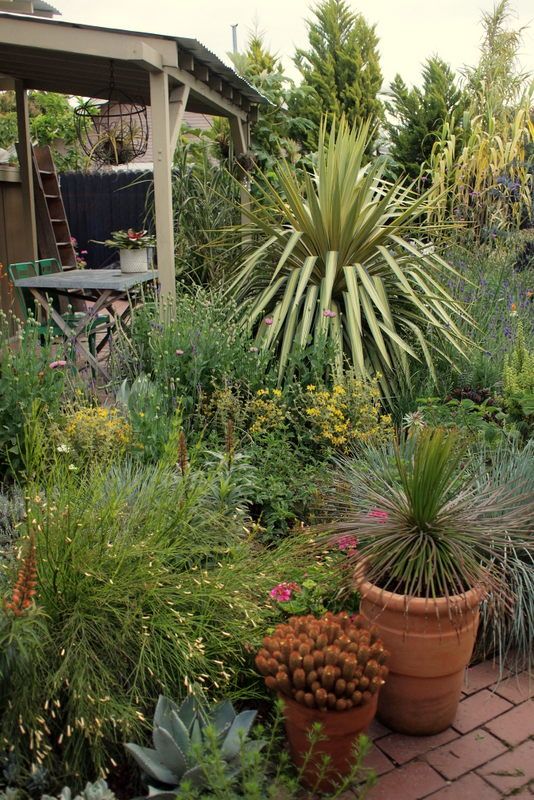
April 2014, Yucca ‘Margarita’ with Phlomis lanata at its base.
So a note to future self: Two Phlomis lanata were planted September 2017, with optimal conditions of full sun, good spacing and air circulation. Ditto for a couple Lavandula ‘Silver Anouk.’ My working theory is that these smallish shrubs get buried under the summer growth of grasses, castor bean plants, salvias, etc. A small, treasured golden phlomis from Cistus, ‘Sunningdale Gold,’ only made it through summer because it was protected from overgrowth by a large metal basket.
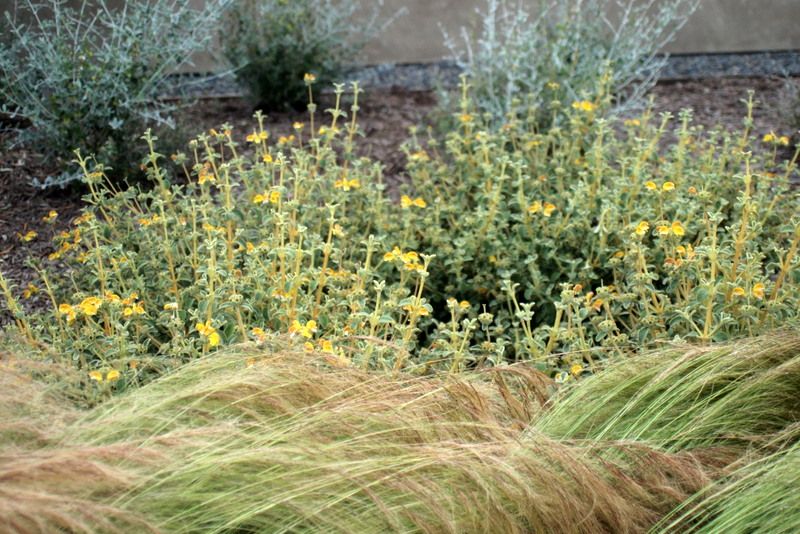
Phlomis lanata, May 2013, in a local hell strip, with feather grass and Teucrium azureum.
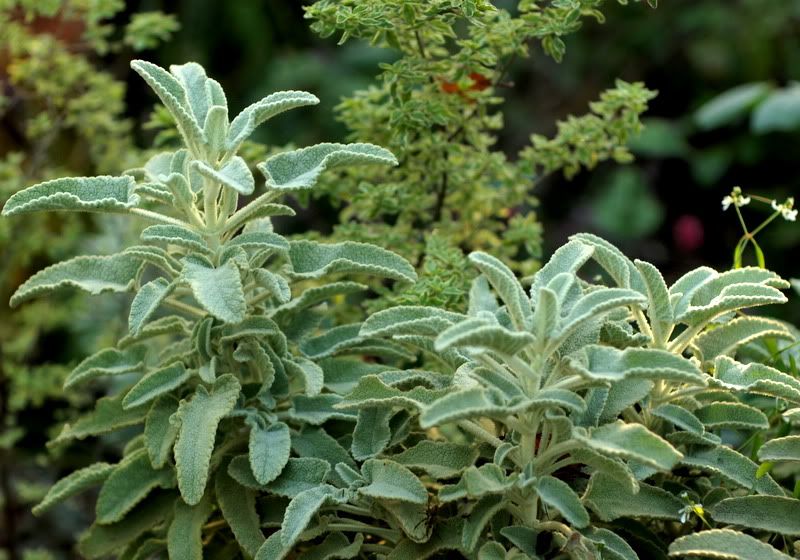
Phlomis purpurea in 2010.

Phlomis purpurea also in 2010, with Xanthosoma ‘Lime Zinger’ stealing its thunder.
Digging Dog Nursery has an extensive list of phlomis on offer, should you wish to try some for the first, second, or even third time, as does Cistus.

I do a relatively good job of recording new plants (I keep an Excel file, organized by area) BUT I’m absolutely terrible about recording deaths, not to speak of the all too common mysterious disappearances. I pulled out 2 dead wads of shriveled foliage from a bed late this afternoon and wasn’t even sure what they were (or rather what they used to be). By process of elimination, I finally concluded that they were 2 of the 3 Verbascum arcturus I planted last year, apparently taken out by the last heatwave. Have I recorded their status in my file? Ha! But I’m going to do so, just as soon as I read another couple of blog posts. It’s funny but when I saw Phlomis lanata at Armstrong this week, I thought “Denise grows this.”
Well, you have to kill a plant at least three times before you give up, right? And some plants may be worth trying even more times, especially if the first three times something unusual happened, or you learned something new about the needs of that plant…so many possible justifications. lol. It can be hard to remember sometimes. I’ve started keeping a spread sheet of all the plants I grow and I try to keep track of anything that dies and make a note about why it died. Or why I removed it, which is handy for those plants that always seem to draw you in but then become ho-hum all too quickly.
Phlomis lanata looks like a near-ideal hellstrip plant.
I’m hugely grateful for Bloom Day reports from all over; have learned so much. Not just the many new-to-me plants, but also a look at the actual garden effect of plants familiar only from catalogs, and a much better grasp of the seasons and sequences in different regions. So thanks to all of you for documentary discipline!
I’m like Kris in keeping a spreadsheet of plants grouped into garden areas. I’m pretty good about recording in-garden losses — either during the winter when putting together wishlist orders, or during planting seasons when entering the newly-added plants.
Lately I’ve taken to noting problems/decline in notes on my Pinterest pins. There’s something about a photo of a plant at its best that spurs me to note the distance between the possibility and what’s happening here…
I have a little Annie’s Phlomis purpurea to get into the ground–what will happen? First ever Phlomis. I’m tired of killing ‘Cousin Itts’.
The documentation blogs provide is truly valuable–would be better if I’d not stored so many photos on photobucket.